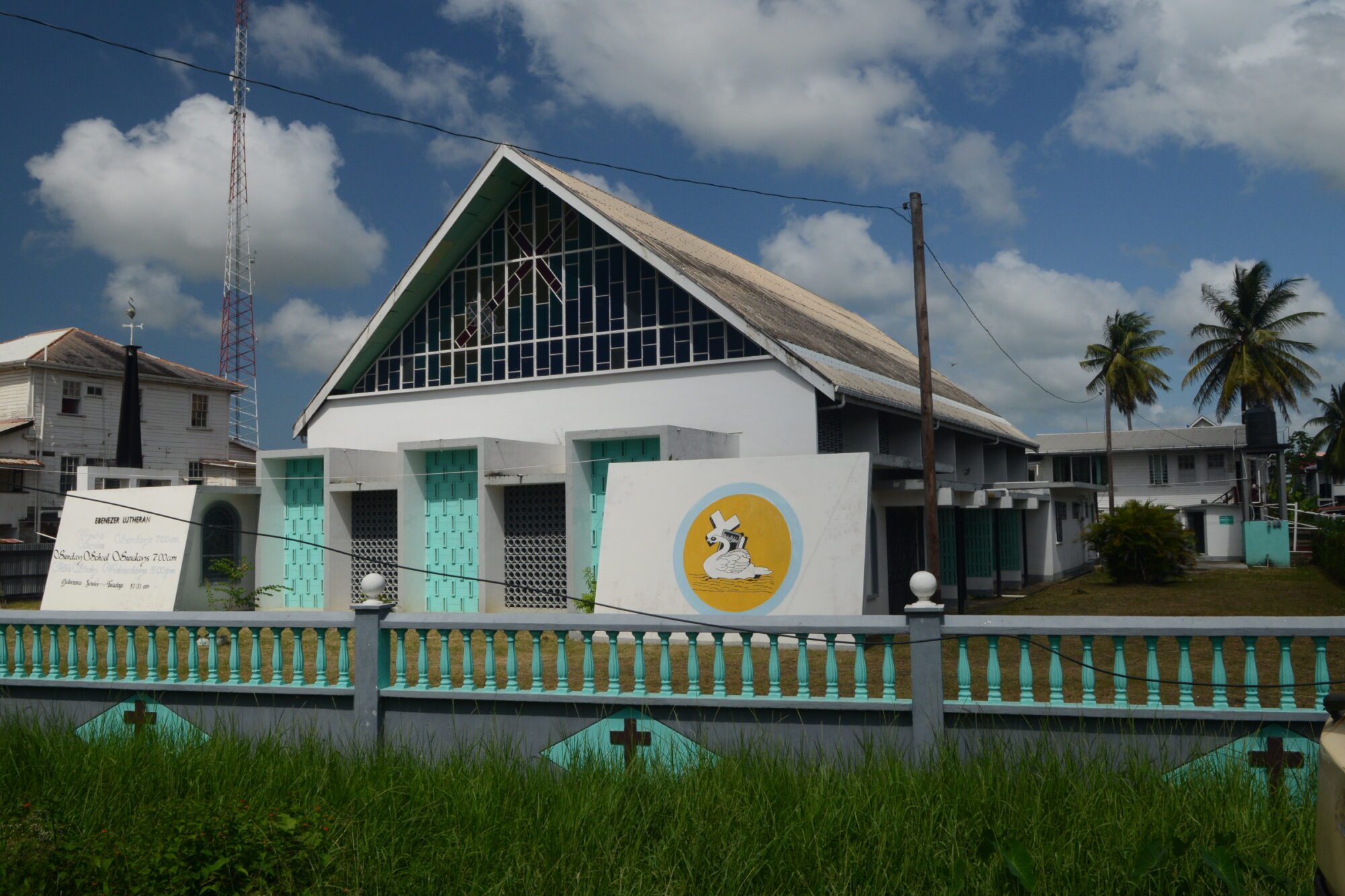Location: New Amsterdam, Berbice
Classification: Religious Period/ Year Built: Established circa 1742, present building built circa 1964
Historical Background / Description:
The Ebenezer Lutheran Church is the oldest established religious Institution in Guyana and one of the oldest church bodies in South America. Some historians believed that Lutherans from the nearby Dutch Colony Surinam (now Suriname) who had established their Lutheran Church in 1668 migrated to the Berbice area to spread their faith within the colony. Initially, Lutherans were scattered throughout the colony and usually met severe opposition from the Dutch Reform Church. Ebenezer Lutheran Church is believed to have been established circa 1742, however, it was not until 1743 that the church’s presence in the colony was acknowledged.
On October 15, 1743, at the residence of a Dutch planter, Lodewijk Abbensets, a number of individuals gathered to profess their unaltered Augsburg Confession of faith and to discuss plans for a Lutheran Church in the colony. As a result of this meeting, a petition was sent to the Court of Policy, the Directors of the Colony (Berbice Association) and the States General of the Netherlands seeking endorsement for a church building and a school. On May 11, 1744, the Lutherans were permitted the freedom to openly practise their faith. The church received its first preacher from Amsterdam, Preacher Johan Kendrick, who arrived in the colony on October 15, 1752.
His first church service was held on August 5, 1753 and sometime later the first church building was built. It was located on two plots of land in a small village near Fort Nassau called Nieuwe Amsterdam. The structure was described as a modest building built of bricks, clay and a thatched roof. During the 1763 Slave Uprising, the church was the only building not damaged by the slaves. The capital of Berbice was moved to New Amsterdam near Canje and Berbice Rivers in the 1790s. The church later moved to New Amsterdam to its current site, after the religious body was granted a plot of land on Strand Street and the first church to be built in New Amsterdam was completed in 1803.
It is not clear how many times the church was rebuilt, but in 1964, a wooden church was replaced with the current singlestorey, concrete building. This church was designed by architectural firm Mence & Moore under the supervision of Mr. Patrick Barnes. Notable features of this building include its stained-glass window with a depiction of Jesus Christ praying in the garden immediately after the Last Supper.





